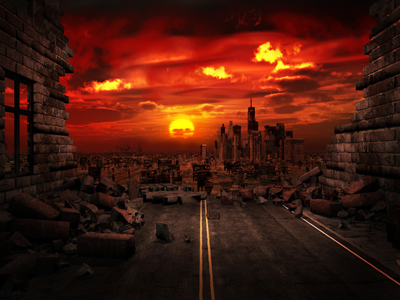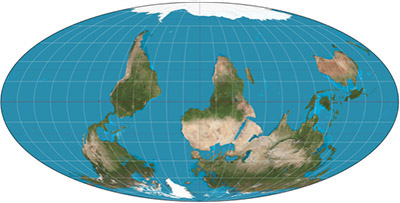
|
The Emperor Caligula was quoted by Suetonius as saying, “Would that the Roman people had but one neck!” Apparently so that he could hack through it more easily. Everyone wants to have control of their situation, and on the easiest possible terms.
In the business world, this tendency is represented by monopoly, where for the sake of simplicity, economy, efficiency, or some other perceived value there is only one producer or supplier of a particular category of goods or services, and by monopsony, where for the same set of reasons there is only one buyer. Think of the Defense Department and its need for complementary weapon systems, as opposed to individual purchases by each branch of the service, or by each military unit and base. Or the current drift toward single-payer medical coverage and its promise of cost reductions through the government’s negotiating power and volume purchases.
Monopolies have always enjoyed state support. The English crown, up until the 17th century, regularly granted royal favorites the monopoly trade in certain products, such as sweet wines in the Elizabethan period. And the British East India Company was granted exclusive trade rights in lands bordering the Indian Ocean. Americans have not generally favored monopolies until the widespread distribution of electricity in the late 19th and early 20th century, when it became inconvenient to have several power companies stringing wires up and down both sides of the street to reach their customers. It then became necessary to grant regulated monopolies to electricity and gas providers to systematize their distribution.
Generally though, big players do better in any market. If a company making anything, from cars to soft drinks, reaches the position of first, second, or third in the marketplace, it will want to crush its competition and take all the customers.1 And the government likes a marketplace dominated by big players: they are easier to deal with, regulate, and tax.2 Certainly, government regulation tends to work against a field of small players, who do not have the legal and regulatory affairs departments or the budgets to lobby government, respond to regulations, and engage in defensive lawsuits.
While our government has officially been “antitrust” since the days of the Robber Barons and the interlocking directorates of various companies controlling, for example, the markets in coal and steel, government has turned a blind eye to amalgamation and unification in the labor market. There different unions have banded together into effective monopolies on the labor supply for factory workers, service employees, and truck drivers. Again, big players do better in the market. They swing more weight. As individual union members join together in a giant, amalgamated union—they can speak with one voice. They can get more things done to their liking. They can have their way. And it’s actually a form of democracy—at least for the members of the union.
And where unions don’t exist, or have been withering for decades under our huge economic expansion, they soon may make a comeback as government increases its reach into the economy. For example, the current push for single-payer medical plans, or some version of Medicare for All, would make it easier for the nurses’ union to negotiate a favorable pay rate with a single government entity, rather than with a handful of large hospital corporations or thousands of local hospitals and clinics. And a government monopsony on health care would push the rest of the medical profession—doctors’ associations and collections of other health care specialists—into some form of consolidated negotiation or full unionization. It would also further the amalgamation of hospitals into larger corporations and combinations.
But while bigger may be better for the dominant players in the marketplace, the trend towards monopoly and monopsony isn’t necessarily good for the market itself.
First, when one product or system dominates, it tends to limit invention and technological progress. Success tends to make people conservative. Yes, monopoly players worry about some competitor coming along and beating them at their own game, but then their urge is to buy up, buy out, and shut down that competitor, or simply crush it by temporarily lowering prices on their own products. If AT&T (“Ma Bell”) had retained its monopoly on long-distance telephony and its ownership of the various local telephone companies (“Baby Bells”), its own manufacturing arm with Western Electric, and its research facilities with Bell Telephone Laboratories (“Bell Labs”), how soon do you think cellular phones, which are not dependent on wires at all and are instead a radio product, would have become available? The phone company would have crushed any radio product that needed to touch its phone system and landlines—except, possibly, for automotive radiophones, which would have been expensive and limited to very special users.
Second, in a monopoly situation, or under the conditions forced by a monopsony, employment choices are more limited. If you were a telecommunications technician or inventor in the Ma Bell era, you could either work for AT&T or find some other career. And if you disagreed with the company’s directives, choices, and planning, you could either speak out and find your career truncated, or you could keep your head down, rise in the organization, and hope to one day influence those decisions. Jumping ship to join a competitor or starting your own company with a better idea just wasn’t in the cards. The same goes for employees at NASA or your regulated local utility company.
Third, monopolies and monopsonies are almost always bad for the average person, the individual buyer, the customer, the person at the ultimate end of the supply chain. Where one organization has purchasing and pricing power over the market, the little guy accepts what he gets and pays what is asked. Not everyone wanted a Model T in “any color so long as it was black.” Not everyone wants a single choice of deodorant or sneaker. Not everyone wants the government deciding who will get a CT scan and when, because someone far up the food chain made a nationwide decision about how many CT scanners to buy for each county. People might appreciate efficiency, simplicity, economy, or some other overriding value in the abstract. But not everyone prefers white bread over pumpernickel, plain whisky over flavored vodkas, or the deodorant with a sailing ship on the label over any other brand. People like choices, making their own decisions, and deciding how and where to spend their money.
Fourth, and finally, monopolies and monopsonies almost never last. Sooner or later, the entrenched position becomes so cautiously conservative, so calcified, and so behind the times that a clever inventor can find a work-around: a new and disruptive product, a new marketplace, or a new champion. That’s happening all over the place these days, in the automotive world (hybrids, Tesla), in telecommunications (cell phones), in computers (laptops and tablets), in medicine (genetic analysis, personalized medicine), and in space exploration (SpaceX, Blue Origin). Big players become vulnerable unless they can also become nimble—not just crushing the competition but learning to dance with it.
Caligula’s desire for Rome to have just one neck, to make it easier for him to put his foot on and eventually to hack through, was the cry of every tyrant. But for anyone, even for a Roman emperor, life just isn’t that easy.
1. Unless, of course, the competition is good for the top players. Think of Coca-Cola and Pepsi-Cola, both of whom benefited by fostering their brand loyalty over the other competitor. Or the “Big Three” auto makers, who sold more cars by competing with the other guys on styling, horsepower, or some other popular enhancement, thus churning the annual sales of new cars.
2. If you doubt this, remember the senator who complained about the inefficiency of a market that offered Americans a variety of products: “You don't necessarily need a choice of 23 underarm spray deodorants or of 18 different pairs of sneakers.” It’s much easier to manage an economy with fewer choices and a monopoly player making all the decisions for the folks doing the buying.


